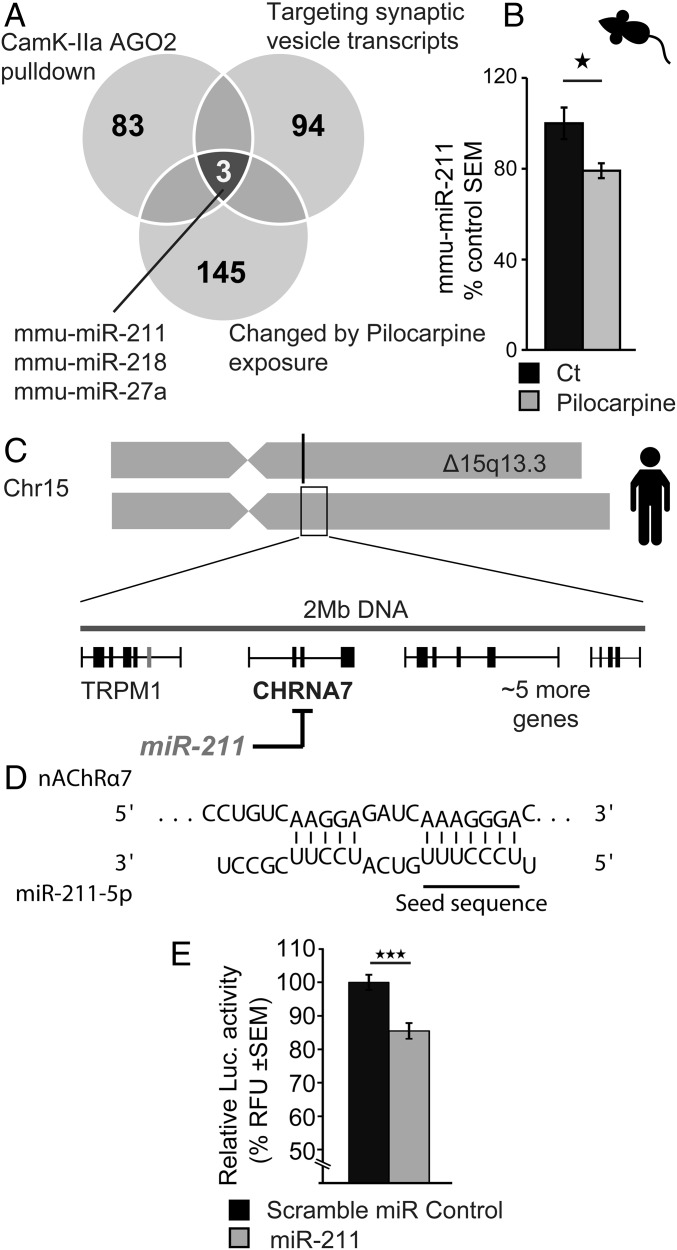Fig. 1.
Identifying MiR-211 as a synaptic candidate associated with cholinergic signaling-induced seizures. (A) Three candidate miRs (miR-211, -218, and -27a) emerged by intersecting rodent miRs whose levels modify following exposure to the cholinergic facilitator pilocarpine (145 miRs) (6); interact with the RNA-induced silencing complex (RISC) protein Argonaute 2 (AGO2) in CamK2a-expressing cells (83 miRs) (25); and target synaptic vesicle transcripts (94 miRs) (75), predicting involvement in cholinergic-related epileptic seizures. (B) qRT-PCR measurements show mmu-miR-211 decline in hippocampal RNA 24 h following exposure to pilocarpine. (C) Human MiR-211, as well as its in silico target, nicotinic nAChRα7, and five other genes localize to a 15q13.3 chromosomal region where heterozygote deletions entail cognitive impairments with recurrent seizures. (D) The seed domain of hsa-miR-211-5p shows sequence complementarity with the inflammation-regulating nicotinic nAChRα7. (E) Luciferase assay validated direct targeting by miR-211 of nAChRα7 in human embryonic kidney cells. Results were considered significant at *P < 0.05, ***P < 0.001, after correction for multiple testing when applicable.

